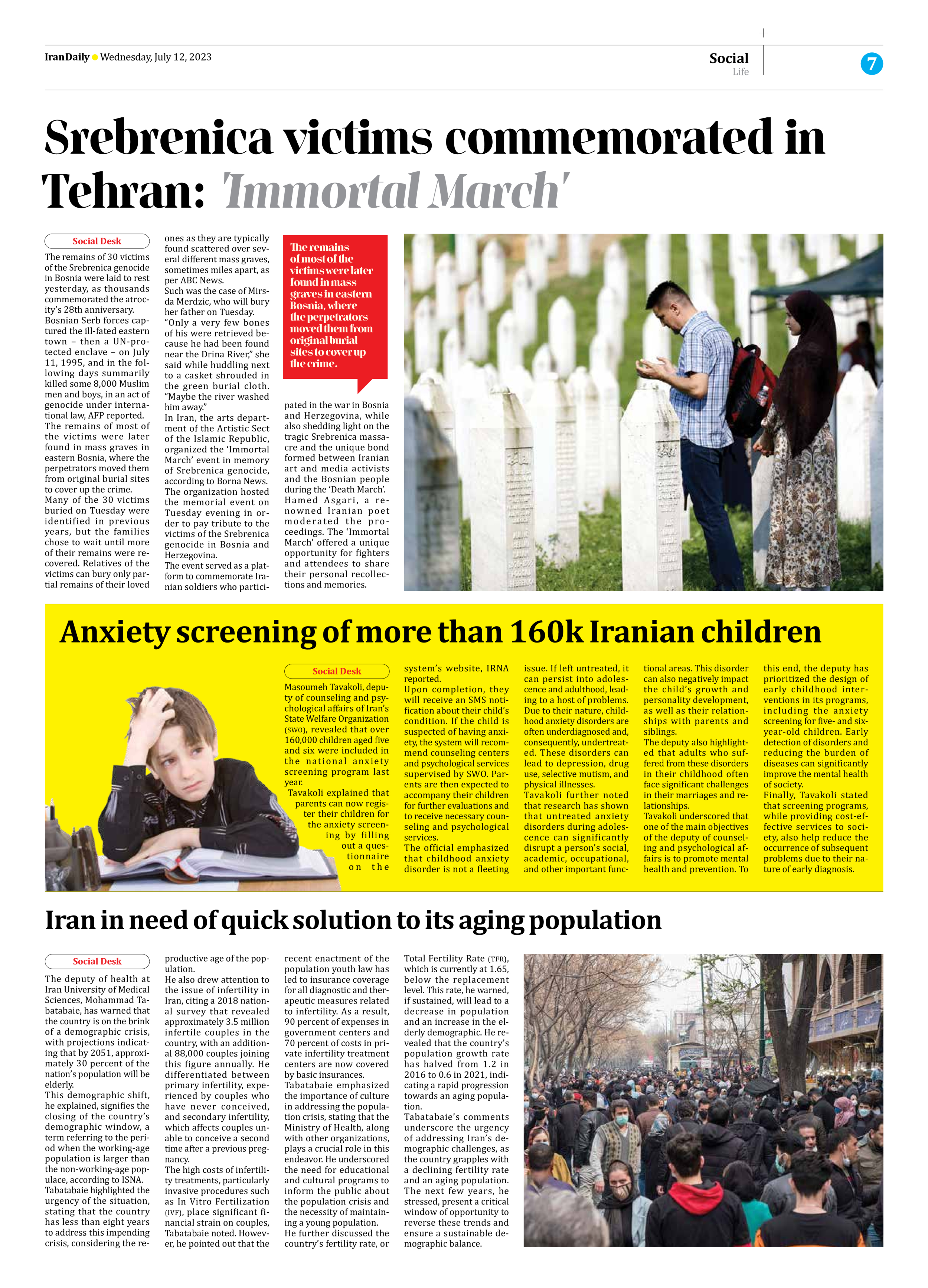
Iran in need of quick solution to its aging population
The deputy of health at Iran University of Medical Sciences, Mohammad Tabatabaie, has warned that the country is on the brink of a demographic crisis, with projections indicating that by 2051, approximately 30 percent of the nation’s population will be elderly.
This demographic shift, he explained, signifies the closing of the country’s demographic window, a term referring to the period when the working-age population is larger than the non-working-age populace, according to ISNA.
Tabatabaie highlighted the urgency of the situation, stating that the country has less than eight years to address this impending crisis, considering the reproductive age of the population.
He also drew attention to the issue of infertility in Iran, citing a 2018 national survey that revealed approximately 3.5 million infertile couples in the country, with an additional 88,000 couples joining this figure annually. He differentiated between primary infertility, experienced by couples who have never conceived, and secondary infertility, which affects couples unable to conceive a second time after a previous pregnancy.
The high costs of infertility treatments, particularly invasive procedures such as In Vitro Fertilization (IVF), place significant financial strain on couples, Tabatabaie noted. However, he pointed out that the recent enactment of the population youth law has led to insurance coverage for all diagnostic and therapeutic measures related to infertility. As a result, 90 percent of expenses in government centers and 70 percent of costs in private infertility treatment centers are now covered by basic insurances.
Tabatabaie emphasized the importance of culture in addressing the population crisis, stating that the Ministry of Health, along with other organizations, plays a crucial role in this endeavor. He underscored the need for educational and cultural programs to inform the public about the population crisis and the necessity of maintaining a young population.
He further discussed the country’s fertility rate, or Total Fertility Rate (TFR), which is currently at 1.65, below the replacement level. This rate, he warned, if sustained, will lead to a decrease in population and an increase in the elderly demographic. He revealed that the country’s population growth rate has halved from 1.2 in 2016 to 0.6 in 2021, indicating a rapid progression towards an aging population.
Tabatabaie’s comments underscore the urgency of addressing Iran’s demographic challenges, as the country grapples with a declining fertility rate and an aging population. The next few years, he stressed, present a critical window of opportunity to reverse these trends and ensure a sustainable demographic balance.







